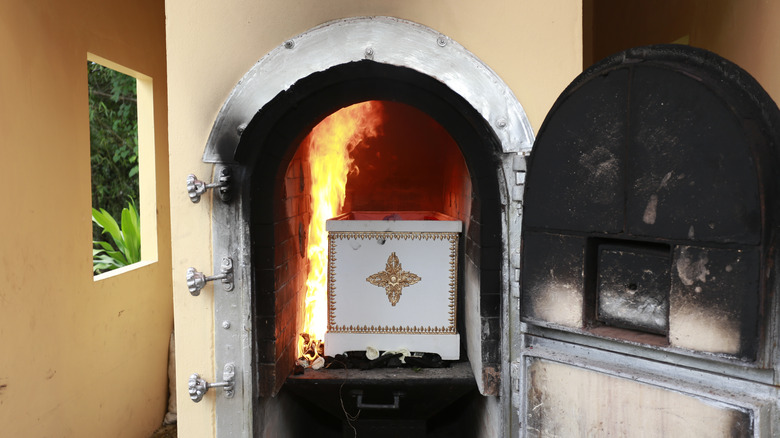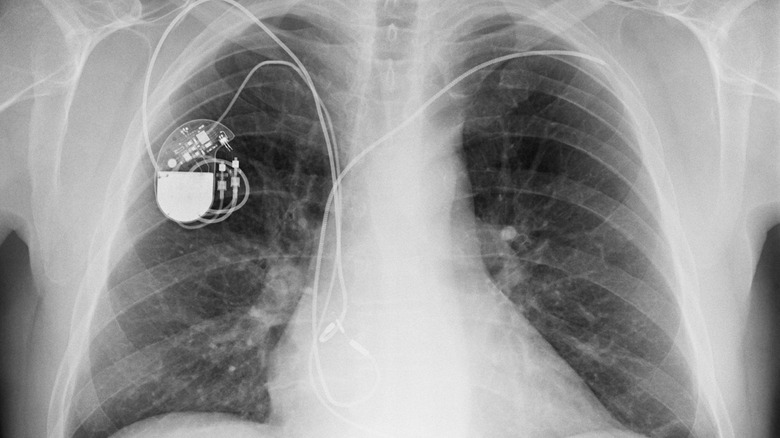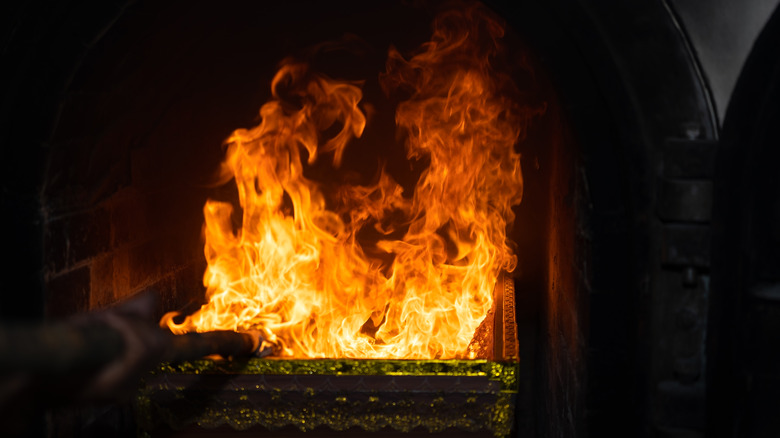Do Bodies Really Explode During Cremation?
Urban legend has it that when a body passes through a furnace at a crematorium, the fiery conditions can result in a dramatic corpse explosion. The most popular old wives tale runs that the human head can crack like an egg at high temperatures, shattering into chunks of burning brain matter.
Although you may feel that going out with a bang is actually pretty cool, the evidence for exploding corpses is still pretty thin. According to recent research published in the Journal of Forensic Sciences, a test of the effects of fire on human remains showed that exploding heads seem to be a myth. Normally, a typical cremation is a rather dull affair in which a body is slowly reduced to ash over the course of a few hours.
There are, however, things that can cause crematorium explosions but they typically come from inanimate objects accidentally left with (or within) the body — rather than the corpses themselves. Secondly, while your head is unlikely to burst, there is a remote possibility that noxious gases left to brew in our bodies after death can imbue our corpses with explosive qualities.
Exploding heads and stomachs?
Crematorium-corpse explosions may be largely a myth, but it is true that after death the human body can become explosive under the right conditions. BBC Science Focus argues that there is a miniscule chance that a body could explode during cremation due to the build-up of gases in the body.
Left for long enough, the putrefaction process that breaks down our bodies produces ammonia, methane, and hydrogen sulfide — a potent and flammable mix. Embaling procedures will normally slow this process of decay down though, making a human corpse bomb highly unlikely.
On the other hand, your body is far more likely to explode like a gruesome pinata if left in a mausoleum. Bodies placed above ground in mausolea do sometimes explode under the right conditions. A rare phenomenon known as "exploding casket syndrome," can occur when tightly sealed and too-small caskets cause a dangerous build-up of gas that has nowhere to go. Best practice in the funeral industry generally recommends that a corpse be allowed some air to breathe — thus preventing the body from bursting for its gory finale.
Real explosions at the crematorium
Rest assured, crematorium explosions do occur — and with surprising regularity. It is not unheard of for loved ones to hide combustible items in coffins, adding unwanted fuel to the fire. Funeral directors also sometimes forget to check people's pockets, with potentially disastrous consequences.
In such cases, electronic items such as cell phones, are among the most common culprits, however — sometimes more unusual items get sent through the fire. According to the BBC, in 2018, an exploding coconut left in a coffin caused an incident in Bolton in the U.K., while in the U.S. an explosive cremation occurred in Boston in 2023 when a loaded gun left with the body somehow went undetected by staff (via Boston News 25).
Life-saving medical equipment can also become a hazard if nobody thinks to remove it from a corpse. According to a study published by the JRSM, half of all crematoriums in the U.K. alone have dealt with pacemaker-related explosions. In a particularly disastrous case, a pacemaker left in a body in France destroyed a crematorium furnace when it exploded with the force of 2 grams of TNT (per The Independent). The widow of the deceased was subsequently charged with damages for failing to mention the device on the requisite forms.
Body fat fires
While bodies rarely explode like bombs, when ignited human body fat does have the potential to cause deadly grease fires bad enough to destroy funeral homes. A surge in obesity in the developed world has made these types of fires more likely and forced some crematoriums to change how they operate. US Funeral Online notes that in America, the maximum size of crematorium machine doors has increased from 33 inches to 52 inches to cope with expanding waistlines.
The intense heat created by body fat can be deadly. For example, in Salt Lake City in 2006, a 600-pound body caused a grease fire at a funeral home that had to be put out by firefighters (via The Salt Lake City Tribune). More recently, in Cincinnati Ohio in 2017, part of a crematorium was set ablaze when a particularly large corpse burned at higher temperatures, the BBC reported.
The problem is also not America's alone. Germany's Spiegel International claims that a rise in obesity in the country has made crematorium fires much more common. Most crematoriums are not equipped to handle the heat obese corpses can create, and the growing number of bigger bodies has even been connected to the higher levels of pollution detected at German funeral homes.



